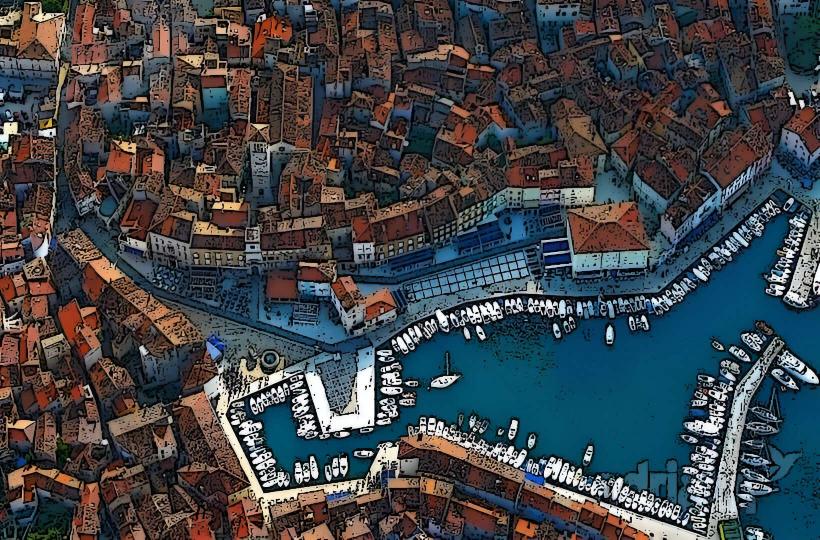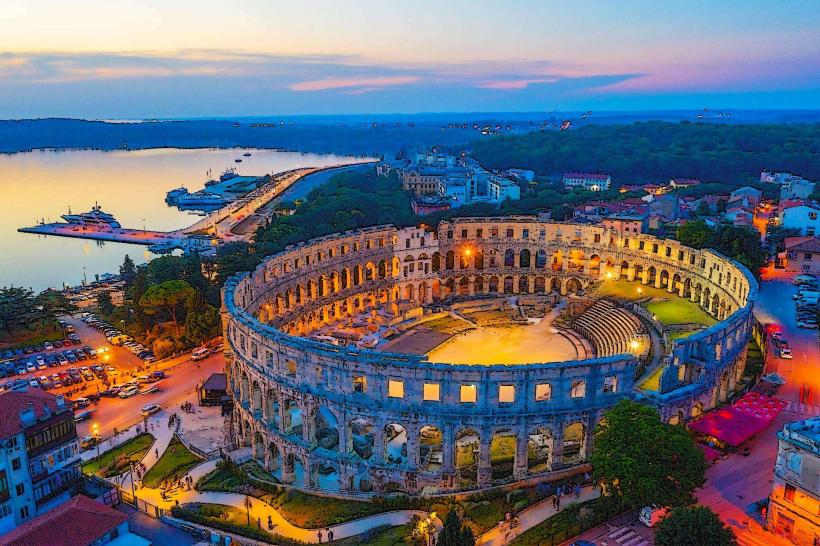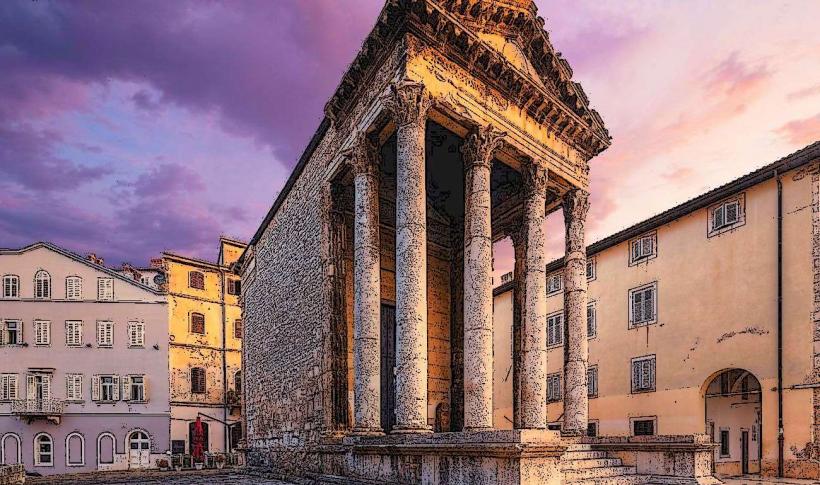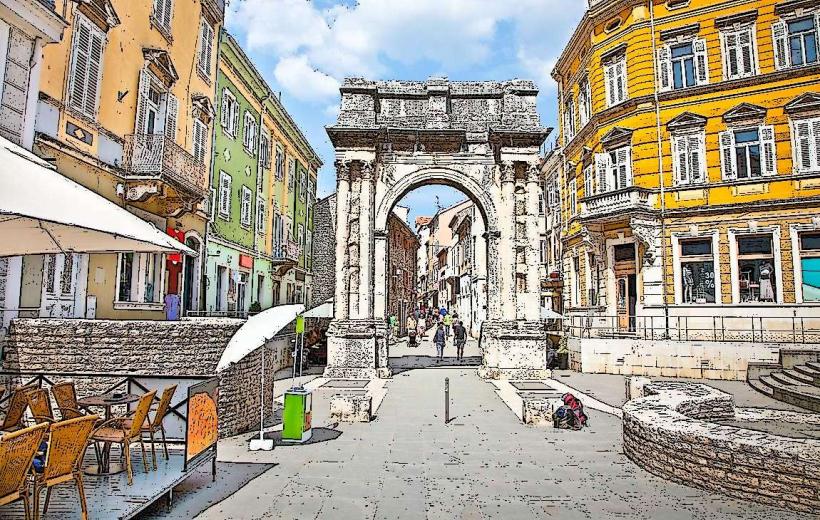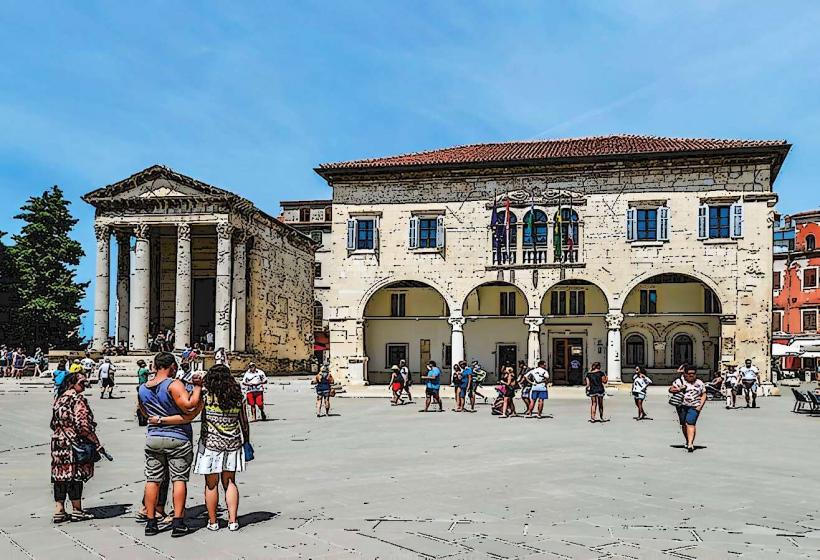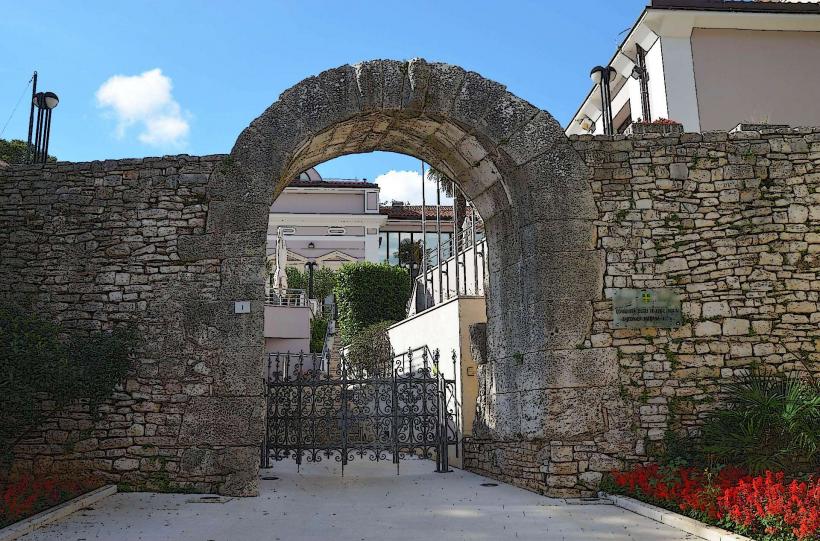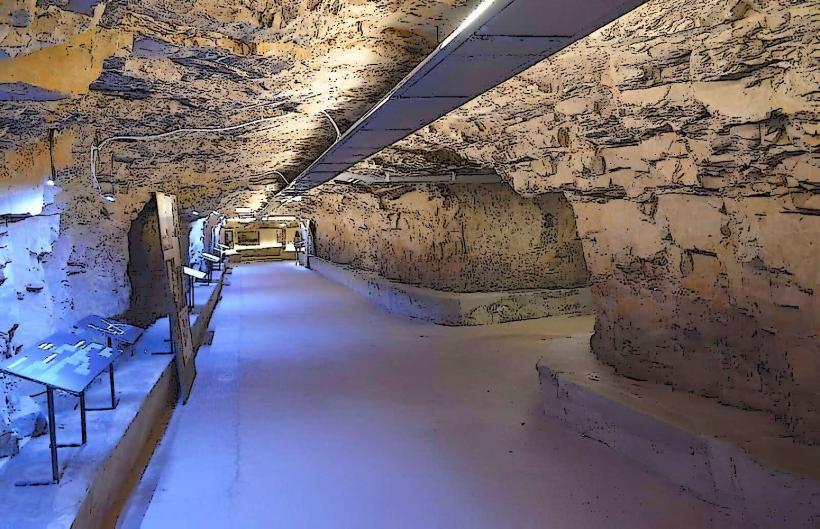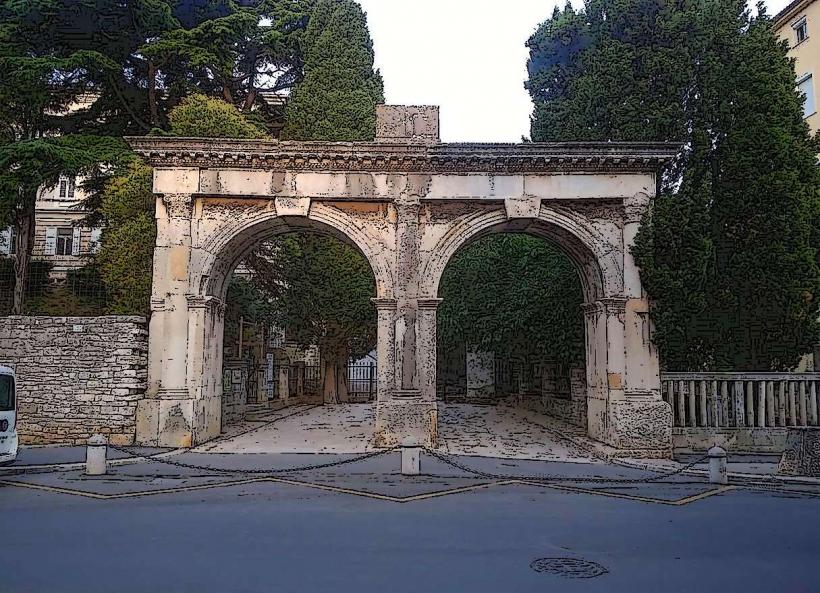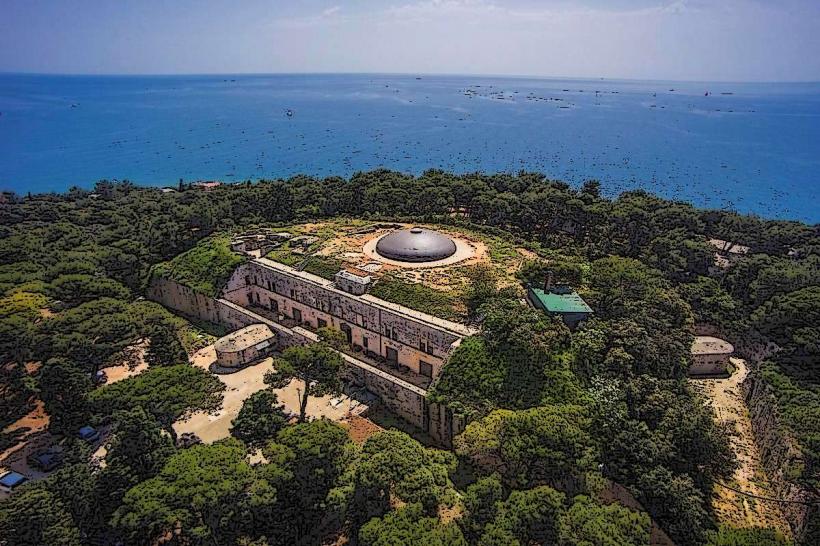Information
Landmark: Cathedral of the AssumptionCity: Pula
Country: Croatia
Continent: Europe
Cathedral of the Assumption of the Blessed Virgin Mary – Pula, Croatia
The Cathedral of the Assumption of the Blessed Virgin Mary, commonly referred to as Pula Cathedral (Katedrala Uznesenja Blažene Djevice Marije), is one of the most prominent and historically significant religious buildings in Pula, Croatia. Located in the heart of the city, it combines Romanesque, Gothic, and Baroque architectural styles, reflecting the city's rich cultural and historical heritage.
Historical Background
Origins and Construction
- The cathedral was built on the site of a Roman temple, with the first church on this location dating back to the 5th century CE. It was originally a paleochristian basilica dedicated to the Assumption of the Virgin Mary.
- The current cathedral structure began its construction in the 6th century under the patronage of the Byzantine Empire, and over the centuries, it has undergone several renovations and expansions, especially during the Romanesque period in the 12th century.
- In the 18th century, the cathedral was significantly altered with the addition of Baroque elements, giving it much of its current appearance.
Role in the Community
- The cathedral has long been the center of religious life in Pula. It has served as the seat of the Bishop of Pula and continues to play an important role in the spiritual life of the city.
- The church has also been a place of refuge and a symbol of continuity in Pula, standing through many changes in the region, including the fall of the Roman Empire, the rise of Christianity, and various political shifts over the centuries.
Architectural Features
Romanesque and Gothic Styles
- The cathedral’s Romanesque design is visible in its broad nave and robust stone walls, which were typical of early Christian basilicas. The Romanesque elements can also be seen in the arcades and arched windows.
- Over time, Gothic elements were incorporated, especially in the nave’s ribbed vaulting and the clerestory windows, which provided better lighting and a more vertical emphasis typical of Gothic design.
Baroque Renovations
- In the 18th century, the cathedral underwent Baroque renovations, adding elements like the ornate altar and decorative stucco work in the interior. These Baroque touches give the cathedral a more elaborate and grandiose appearance, in line with the religious fervor of the time.
- The main altar features a stunning Baroque-style painting of the Assumption of the Virgin Mary, which is central to the cathedral’s religious theme.
The Facade
- The exterior of the cathedral is a blend of different architectural styles, but the Romanesque influence is still dominant in the facade’s simplicity and strong stone structure. The steeple or bell tower, which rises above the city, is a notable feature of the cathedral's skyline.
Interior Design
- The interior of the cathedral is striking, with its high vaulted ceilings, Romanesque arches, and Gothic windows that allow light to flood the space. The Baroque altar and other decorative elements provide a sense of opulence, contrasting with the simplicity of the Romanesque style.
- The cathedral's sacred art includes numerous paintings, statues, and religious icons, with particular focus on the Assumption of the Virgin Mary.
Bells and the Bell Tower
- The cathedral’s bell tower is one of the tallest structures in Pula and offers sweeping views of the city. The bells in the tower have historically been used for church services and special occasions. The tower is a notable landmark for both locals and visitors.
Religious and Cultural Significance
Assumption of the Virgin Mary
- The cathedral is dedicated to the Assumption of the Blessed Virgin Mary, a doctrine in the Catholic Church that asserts that Mary was taken bodily into heaven at the end of her life. This feast day is celebrated annually on August 15th, and it remains an important religious event in Pula.
- The cathedral serves as the main church for the people of Pula and is the focal point for major religious events and celebrations in the region.
Bishop's Seat
- The cathedral is the cathedra or seat of the Bishop of Pula, making it the most important church in the diocese. It is a key site for Catholic liturgical practices in the area and hosts numerous liturgies, processions, and special services throughout the year.
Tourist and Pilgrimage Site
- Besides its religious importance, the cathedral is also a popular tourist destination, attracting visitors interested in historical architecture, religious history, and art.
- Pilgrims often visit the cathedral to seek blessings or to participate in religious festivals, especially during the feast day of the Assumption.
Visitor Experience
Interior Tours
- Visitors to the Pula Cathedral can take guided tours to learn about its long history, architectural styles, and religious significance. The tours often provide insight into the cathedral’s artistic treasures, such as the Baroque altarpiece and medieval mosaics.
- The cathedral also often hosts music concerts and cultural events, offering a more dynamic way to experience the space.
Bell Tower Views
- One of the highlights of visiting the cathedral is the opportunity to climb the bell tower for panoramic views of Pula and the surrounding region. The climb is relatively easy, and the reward is a spectacular view of the city, the Adriatic Sea, and the nearby islands.
Cultural and Religious Activities
- The cathedral hosts several religious festivals and cultural events throughout the year, including midnight Masses, feast day celebrations, and special theatrical performances related to the city’s Christian heritage.
Interesting Facts
Ancient Origins
- The cathedral’s roots can be traced back to the 5th century, making it one of the oldest Christian buildings in Pula. The church was originally dedicated to St. Mary and served as an important center of worship for early Christians in the region.
Roman Temple Foundations
- The cathedral’s foundations are believed to rest on the remains of a Roman temple dedicated to an ancient deity, providing a direct link to Pula’s Roman heritage.
Cultural Blend
- Over the centuries, the cathedral has absorbed various architectural and cultural influences, from Byzantine to Romanesque, Gothic, and Baroque styles, creating a unique and layered religious landmark.
Nearby Attractions
- Pula Arena: The iconic Roman amphitheater in Pula, one of the best-preserved in the world.
- Temple of Augustus: A Roman temple dedicated to the first emperor, Augustus, in the heart of the ancient Roman forum.
- Roman Forum: The central square of Roman Pula, surrounded by ruins of Roman buildings and temples.
- Arch of the Sergii: A Roman triumphal arch dedicated to the Sergii family, located near the city center.
- Fort Verudela (Pula Aquarium): A historical Austro-Hungarian fort now home to an aquarium, providing both history and marine life exhibits.
Conclusion
The Cathedral of the Assumption of the Blessed Virgin Mary is a stunning and historically significant landmark in Pula, Croatia. With its blend of Romanesque, Gothic, and Baroque architecture, it stands as a testament to the city’s rich history and religious heritage. The cathedral is not only a place of worship but also a cultural and historical gem, offering visitors the opportunity to explore Pula’s spiritual past and enjoy its beautiful surroundings. Whether you’re a history enthusiast, an architecture lover, or a religious pilgrim, the cathedral is an essential stop when visiting Pula.

